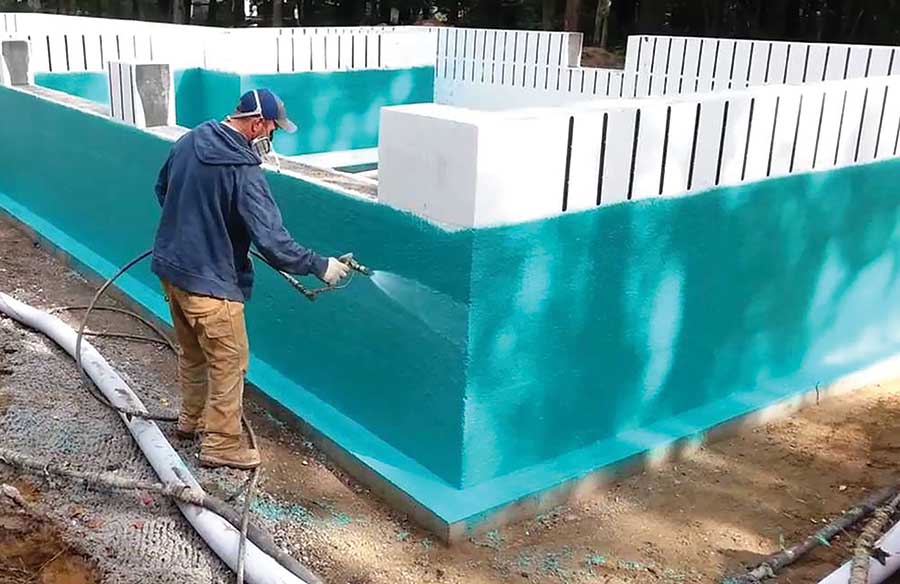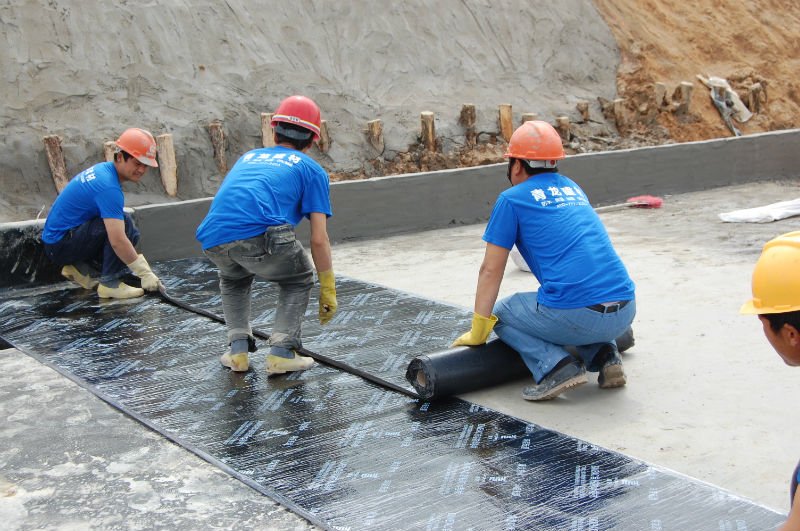Kinds of Waterproofing: Exploring the Various Methods and Their Applications
Waterproofing is a crucial element of construction and upkeep. It secures frameworks from the detrimental effects of water damage. There are a number of approaches offered, each with its one-of-a-kind applications and advantages. From membrane systems to cementitious remedies, understanding these choices is necessary for efficient application. The choice of waterproofing approach can greatly affect longevity and longevity. Exploring these numerous strategies reveals their unique advantages and possible obstacles, motivating more consideration of perfect solutions.
Membrane Layer Waterproofing Solutions
Membrane layer waterproofing systems act as an essential barrier against water intrusion in different frameworks. These systems usually are composed of thin sheets made from materials like rubber, polycarbonate, or bitumen, which are put on surface areas to stop dampness infiltration. They can be set up over or below grade and are particularly efficient in locations vulnerable to high water exposure, such as basements, roof coverings, and foundations.The setup process includes cleaning up the substrate, applying adhesives or guides, and precisely fitting the membrane layer to guarantee full coverage. Membrane layer systems can be either totally adhered, mechanically affixed, or laid loose, depending on the specific needs of the task. They use resilience and versatility, suiting structural activities without jeopardizing their waterproofing capabilities. These systems can be enhanced with added layers for enhanced security. Inevitably, membrane layer waterproofing systems are important for protecting structures versus water damages and keeping long-term honesty.
Liquid-Applied Waterproofing Coatings
Liquid-applied waterproofing finishings provide a flexible service for shielding surface areas from water infiltration - Sump pump installation & replacement Omaha. These coverings are composed of fluid materials that, when applied, create a seamless, flexible membrane. Their adaptability permits application on different substratums, consisting of concrete, metal, and timber. The layers can be used in varied environments, from household to industrial settings, making them appropriate for roofs, foundations, and below-grade structures.One significant benefit of liquid-applied finishings is their capacity to comply with uneven shapes and pass through fractures, developing a durable barrier against wetness. They typically show superb bond properties and resistance to UV radiation, ensuring longevity and toughness. Furthermore, the application process is commonly straightforward, allowing for fast installment and lowered labor prices. This method also lessens the danger of water pooling, as the continuous layer successfully routes water away from susceptible areas. On the whole, liquid-applied waterproofing coatings are an efficient choice for thorough water protection
Cementitious Waterproofing Solutions

Cementitious waterproofing solutions provide a durable alternative for structures calling for dependable wetness protection. These systems largely use a blend of concrete, sand, and chemical additives to develop a water resistant barrier. They are frequently used to surface areas such as concrete wall surfaces, structures, and floorings, giving a long lasting, lasting defense versus water intrusion.One of the vital advantages of cementitious waterproofing is its convenience of application; it can be used utilizing a brush, roller, or spray, making it ideal for various job sizes. Additionally, this technique works with many surfaces and can commonly be utilized find more info along with other waterproofing techniques.Cementitious options are especially efficient in settings where water exposure is a problem, such as basements or below-grade structures. Their superb adhesion residential or commercial properties ensure that they bond well with substratums, offering a strong and impenetrable layer against moisture infiltration.
Bentonite Waterproofing
Bentonite waterproofing is a very reliable method that makes use of sodium bentonite clay to develop a natural barrier versus water. This method exploits the one-of-a-kind residential properties of bentonite, which expands upon contact with water, sealing any kind of prospective leakages and preventing wetness seepage. It is frequently used in numerous applications, consisting of foundation wall surfaces, tunnels, and maintaining walls, where water resistance is essential.Bentonite can be applied in numerous forms, such as panels or coverings, giving adaptability in installment. Its see this site ability to self-seal makes it an attractive choice for locations based on shifting soil or fluctuating water degrees. Furthermore, bentonite waterproofing is environmentally pleasant, as it is an all-natural material that does not present damaging chemicals into the surroundings.
Water Drainage and Outside Waterproofing Solutions
Efficient waterproofing frequently involves a mix of strategies, including drainage and external systems. Drainage systems, such as French drains pipes and sump pumps, are developed to reroute water away from structures, decreasing hydrostatic stress against structures. These systems are important in stopping water build-up that can bring about structural damage and mold growth.External waterproofing, on the various other hand, involves applying safety barriers to the building's exterior. Strategies such as the setup of waterproof membrane layers, finishings, or sealants can help prevent water infiltration. This method not only protects the foundation but also boosts the total durability of the structure.Together, drainage and external waterproofing systems create an extensive solution to manage water effectively. By applying these methods, building owners can protect their financial investments against the harmful impacts of moisture, making certain long-term security and security for their structures.
Frequently Asked Concerns
How Do I Pick the Right Waterproofing Technique for My Project?
Choosing the ideal waterproofing method depends upon aspects such as project kind, environmental problems, spending plan, and preferred durability. Examining these aspects enables educated decisions tailored to details demands and needs.

Can Waterproofing Be Applied in Winter Issues?
Waterproofing can be applied in cool weather problems, but it needs particular materials and techniques. Cold temperature levels might affect treating times and adhesion, demanding careful selection of products company website designed for low-temperature application.
What Are the Usual Indicators of Waterproofing Failing?
Typical signs of waterproofing failing consist of visible water stains, peeling off paint, wet smells, mold and mildew development, and fractures in walls or structures. Basement waterproofing Omaha. These indications recommend that wetness is permeating the barrier, compromising its performance
The Length Of Time Does Waterproofing Last Before Requiring Upkeep?
The longevity of waterproofing differs, usually lasting in between 5 to 10 years. Factors such as worldly top quality, ecological conditions, and upkeep techniques affect its durability, demanding regular examinations to assure effective protection against water invasion.
Exist Eco-Friendly Waterproofing Options Available?
The inquiry of eco-friendly waterproofing alternatives exposes an expanding rate of interest in sustainable materials (Landscape drainage Omaha). Numerous natural compounds, such as plant-based sealants and recycled products, supply reliable services while decreasing ecological effect, appealing to ecologically mindful customers